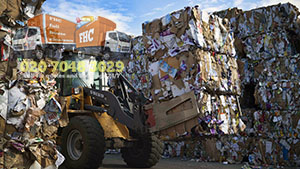Different countries around the world have different waste removal, disposal and processing practices in place. Some countries are doing better than others in terms of recycling and reuse, but the overall trend is toward improvement.
The US in particular is still lagging behind in recycling and reuse rates, even though they have some of the most effective waste removal and disposal practices right now. Currently, the US recycles just under thirty percent of all waste generated on an annual basis. This is twice as much the recycling rates of fifteen years ago – a significant improvement indeed. About forty percent of all plastic waste in the US is recycled annually.
If waste removal and disposal rates in the US were calculated at per city basis, it turns out that population number and waste recycling percentage are correlated but not necessarily interdependent of one another. Here is a closer look at some of the US cities entered in the statistics:
New York – the metropolis has a total population of nearly eight and a quarter million people. Each year the city recycles about fifty five percent of the waste it generates. Not a bad ratio at all.
San Antonio – a significantly smaller city with a total population of one point three million residents. Every year the city recycles only about four percent of generated waste.
Detroit – America’s motor city has about nine hundred something thousand residents. The city recycles ten and a half percent of all waste generated per year. Again, not a bad ratio but could be improved.
Indianapolis – the city has a total population of nearly eight hundred thousand people. Eleven percent of all solid waste generated annually is recycled.
 San Francisco – The City by the Bay is the real champion on this list. With a population of seven hundred and sixty four thousand people, the city recycles seventy percent of its waste annually.
San Francisco – The City by the Bay is the real champion on this list. With a population of seven hundred and sixty four thousand people, the city recycles seventy percent of its waste annually.
On an international scale waste removal, disposal and recycling practices vary greatly, so here is just a quick overview of some of the more notable examples (both positive and negative):
Switzerland – the small European country is huge on rubbish removal and waste recycling practices. Citizens have access to special waste collection facilities found in every supermarket, these are commonly known as bottle banks. Bottle banks are used to separate clear, brown and green glass waste. Regular waste collection service for papers and plastics is available in every town and city.
Denmark – another European top-performer in recycling and reuse. Being one of Europe’s ‘greenest’ countries, Denmark recycles thirty one percent of all household waste, sixty two percent of waste is incinerated, with only six percent ending up in landfills.
Germany – is the world’s environmental protection leader. Germans have made it simple and straightforward – people need to recycle as much as humanly possible, it’s the law.
Greece – not really making an effort to recycle, over eighteen billion plastic bottles wasted annually. One fifth of the country’s waste is plastic, but only one percent of it is recycled.
Italy – one of the worst performers on the Euro scene in terms of recycling. Hardly any effort is made to recycle and reuse materials after rubbish removal and disposal. Although there are laws and regulations in place, no one bothers with recycling and reuse.



